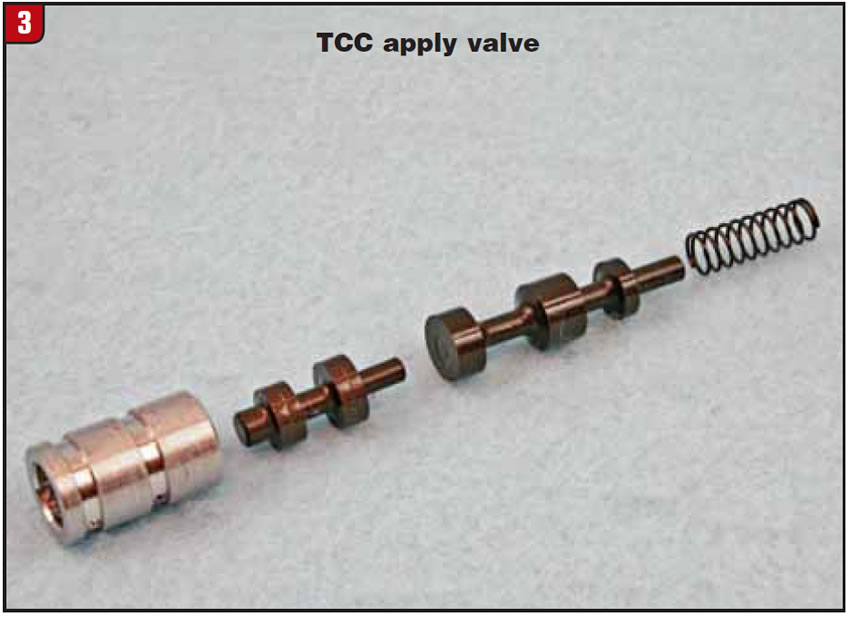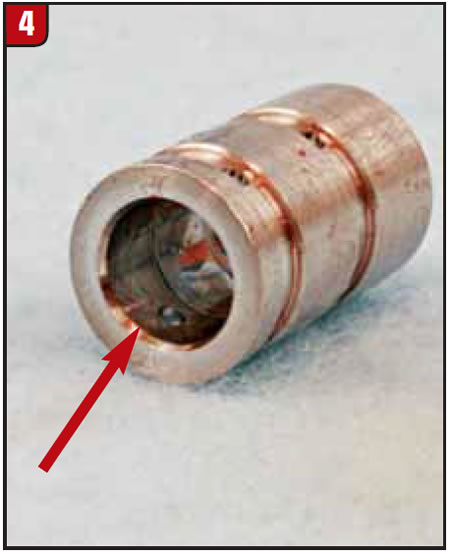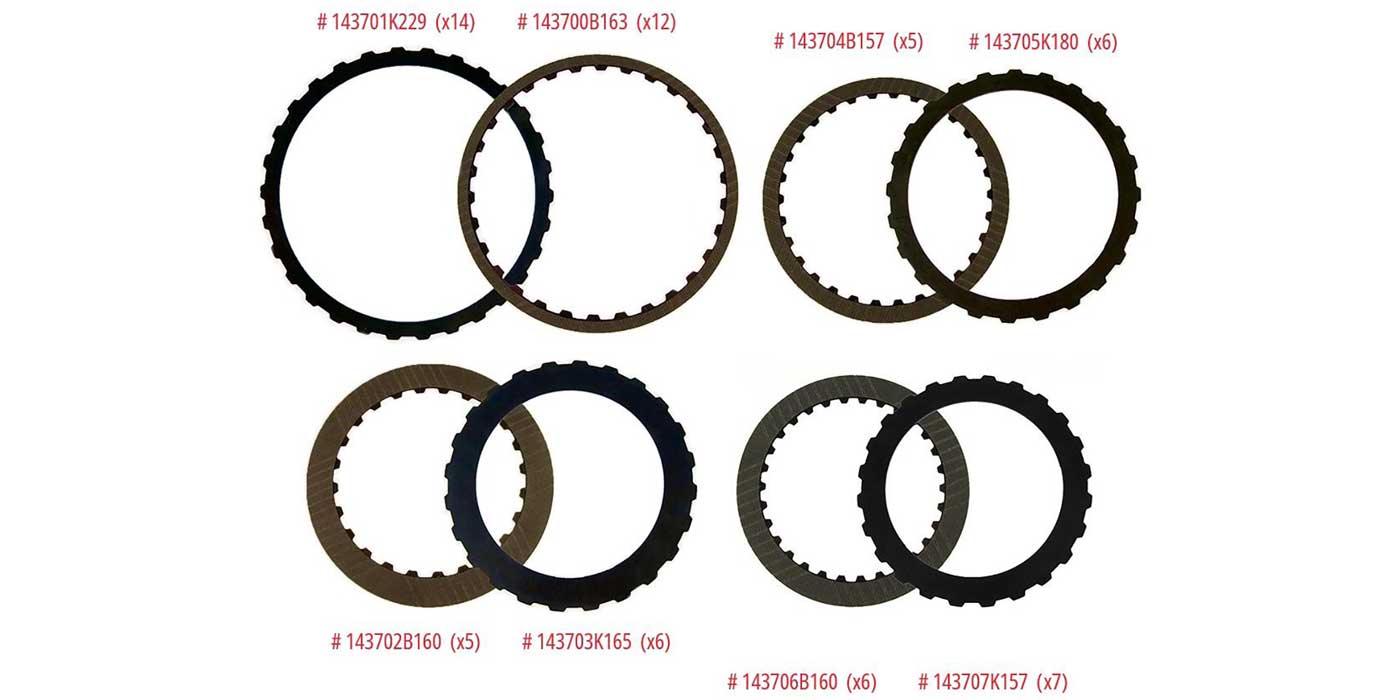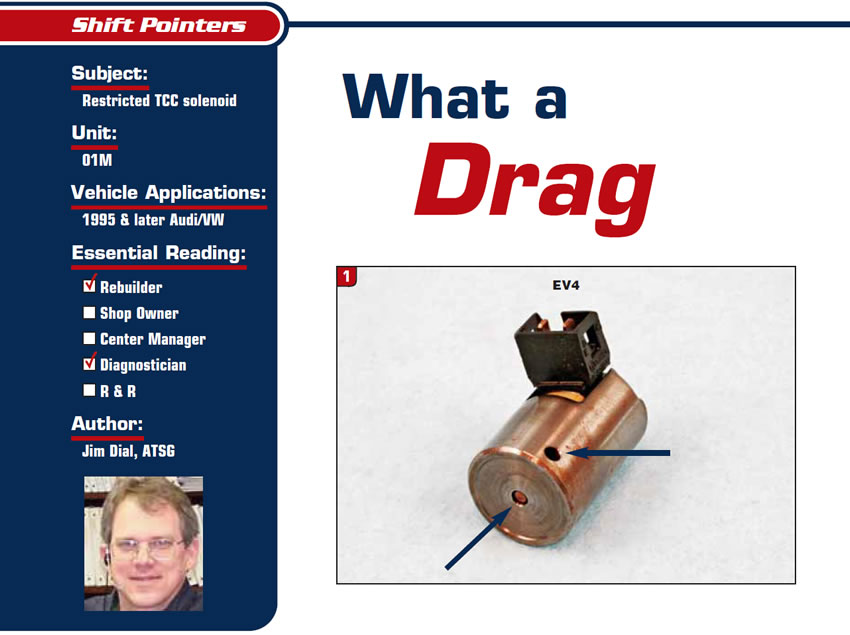
Shift Pointers
- Subject: Restricted TCC solenoid
- Units: 01M
- Vehicle Applications: 1995 & later Audi/VW
- Essential Reading: Rebuilder, Diagnostician
- Author: Jim Dial, ATSG
The ATSG tech line frequently receives calls related to engine stall or even a partial-stalling condition that could be easily mistaken for an engine-performance problem in 1995 and later Audi/VW vehicles with the 01M transmission.
Typically, what happens is that a general-repair shop down the road has spent two days playing with this thing, looking at mass-air-flow graphs, injector pulse width and all kinds of other drivability-related items. He decides to give you a call after he has pulled the last sprig of hair from his head.
He brings the car to you, and it takes a full day before this problem rears its ugly head. You go out and start the vehicle, and when you first select drive it drags the engine down enough that the PCM tries to bring the engine idle up (you know this; when you go from Drive to neutral the engine speeds up for a split second before dropping back to idle). Both feet are now on the brake (just kidding)! You select reverse and it drags even more; you slowly feather the throttle to get it moving down the road, and the first set of shifts is a little rough and the vehicle is trying to fall on its face. You come to a stop and the engine suddenly is as smooth as glass. The customer has complained of a stalling condition at times also.
The long and short of this is that the TCC solenoid (EV4), which is a normally vented solenoid, can develop a mechanical malfunction by which it becomes partially restricted. As a result, it partially strokes the TCC-apply valve, causing only a partial application of the clutch and producing all the previously mentioned complaints.
Figure 1 shows the ports on the solenoid and how to air-check it to make sure that it is good. This solenoid has a valve inside, and if it is free you can hear it rattle when you shake it back and forth.
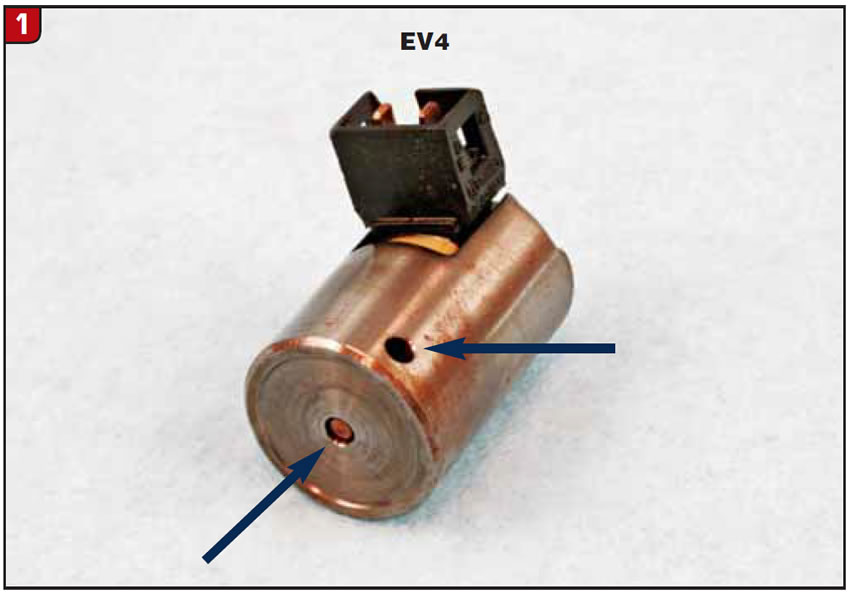
By referring to the partial oil schematic shown in Figure 2, you will see that when this solenoid is partially restricted, it will stroke the TCC-apply valve, drain the TCC-off pressure and apply the TCC.
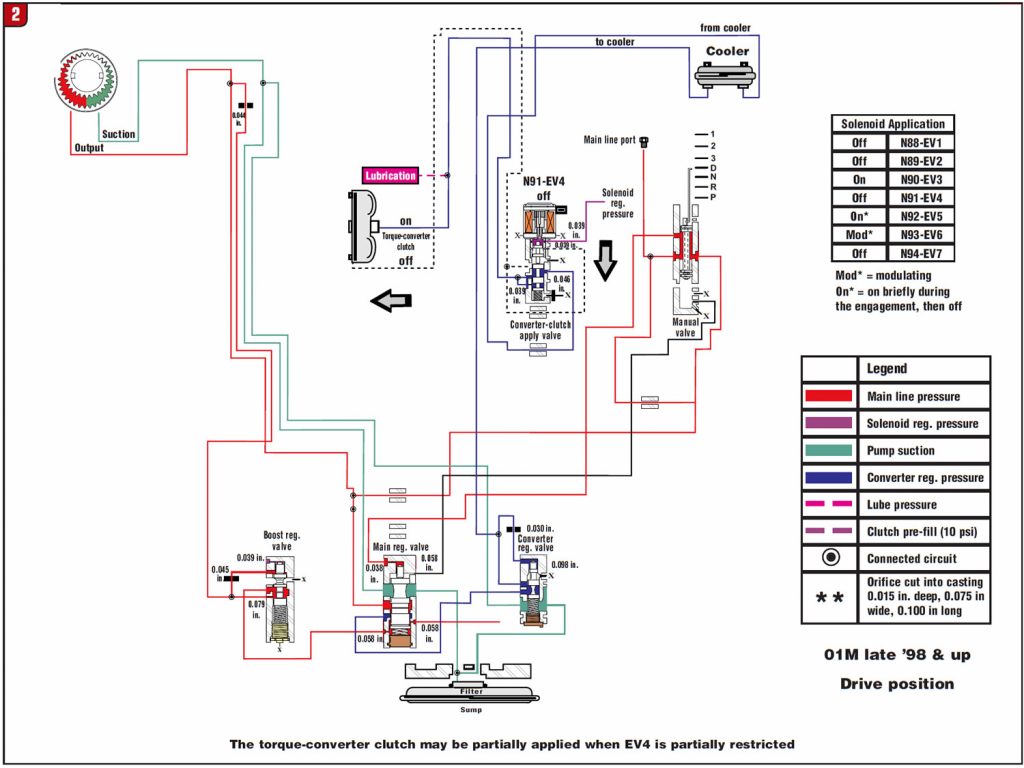
Figures 3 and 4 show the TCC-apply valve train. This is another common area to watch out for; the valve and sleeve as well as the lower valve have been known to wear out and can hang up, causing the same stalling complaint. Some of these parts are replaceable through aftermarket sources.
